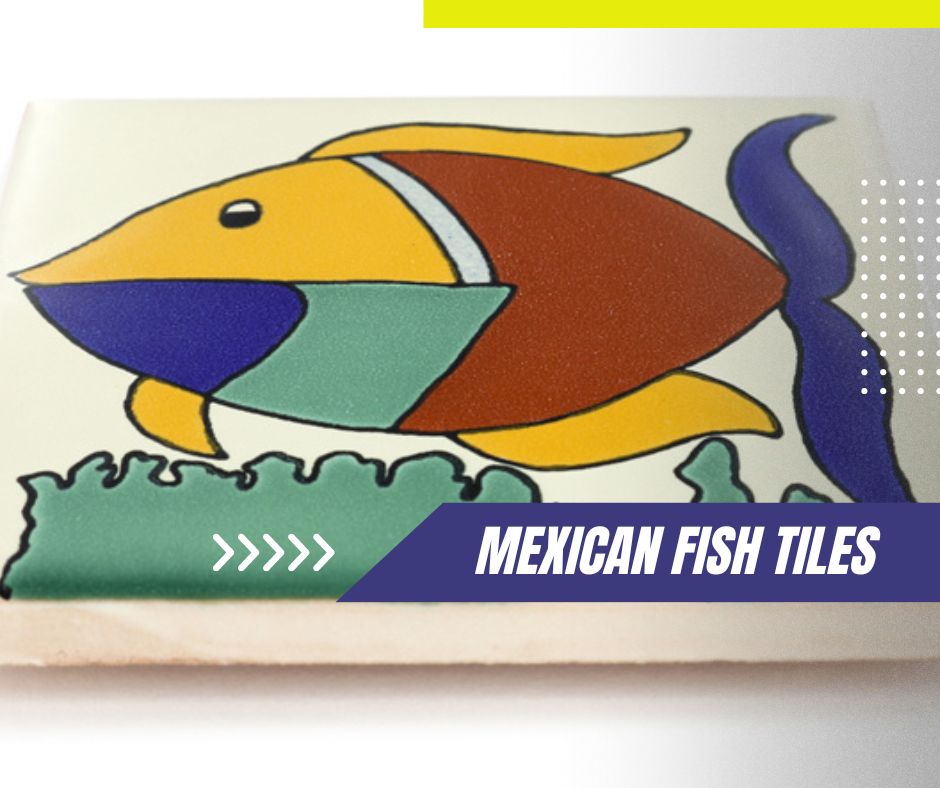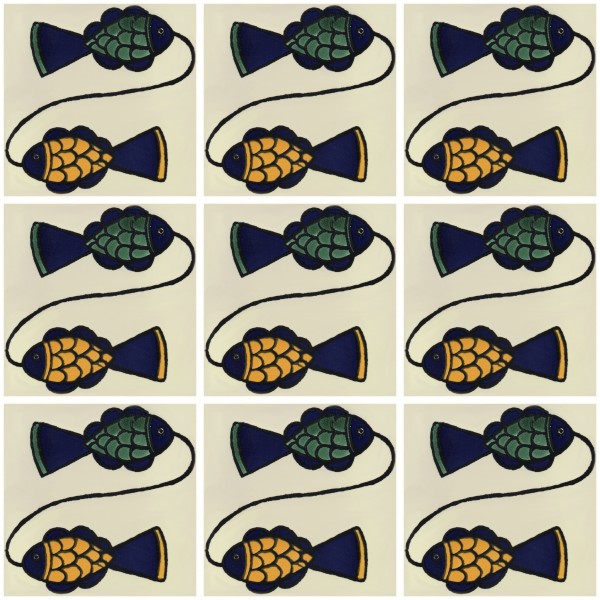Mexico has a rich cultural heritage that spans centuries, and its art is renowned around the world. A unique form of art is the Mexican fish tiles or Talavera, which has been produced in Mexico for over 500 years.
Among the many kinds of tiles produced in Mexico are the stunning fish tiles. It has become incredibly popular among art collectors and interior designers worldwide.

These tiles are often decorated with colorful, vibrant designs that feature various types of fish, marine plants, and other aquatic creatures. They are perfect for adding a touch of artistic flair to any space, from the floors and walls of a home to pools, gardens, and other outdoor spaces.
Besides their stunning visual appeal, Mexican fish tiles also have a fascinating history that dates back to pre-Columbian times.
The Origins of Mexican Fish Tiles
Ceramic tiles were first introduced to Mexico by the Spanish conquerors who arrived in the country in the 16th century. The Spanish brought with them the knowledge and techniques of making the famous Moorish tiles from Spain. These styles started to be produced in Mexico for the first time. Over time, a distinct style emerged in Mexico, utilizing the rich and vibrant colors of the region.

The Mexican style of tiles soon became famous worldwide, and it was even exported to Europe and Asia, where it received further inspiration and influenced the creation of other unique styles of tiles.
Fish tiles represent a unique subset of Mexican tile-making, and they were likely influenced by the indigenous culture that predated the arrival of the Spanish. The ancient Aztecs and other cultures living in Mexico had long been skilled in the art of ceramics and were known for their pottery.
The Artistry Aspect
One of the most remarkable features of Mexican fish tiles is their rich, vibrant colors. These tiles are often adorned with bright hues like blue, green, yellow, and red, as well as intricate patterns and textures that bring the designs to life.
They are created using a technique called “majolica,” a type of ceramic glaze that produces a glossy, lustrous effect.
Mexican fish tiles are not just beautiful artistic creations but are also functional. They are robust tiles that are ideal for use in spaces that receive a lot of traffic like kitchens, bathrooms, swimming pools, and patio areas.
They can be found in various shapes and sizes, from small rectangular tiles to giant, circular murals that are embedded in walls or floors.
New Trends in Mexican Fish Tiles
In recent years, there has been a resurgence of interest in Mexican fish tiles, and they are being used in many modern design applications. Some designers are incorporating them into open kitchens and living spaces by framing them on the walls as art.
They are also being used as countertops, kitchen backsplashes, shower walls, and even as a striking feature in outdoor spaces like pools and patios.
Mexican fish tiles are versatile, durable and their unique beauty means they are resilient to shifting design fads. They also enhance the timelessness of natural materials like wood, rattan and caned seating, and they work well with the updated bohemian look that many modern designers are gravitating towards.
Overall, Mexican fish tiles represent a unique blend of Mexican cultural heritage and artistic ingenuity, resulting in one of the most beautiful forms of ceramic tiles produced anywhere in the world.
The tiles bring a touch of color and vibrancy to any space, and they represent an amalgamation of the indigenous and colonial cultures that have helped shape the Mexican landscape.
As designers and homeowners continue to search for timeless design choices that can add value to their homes, Mexican fish tiles will continue to offer an exciting option that can achieve that timeless and eclectic look.
